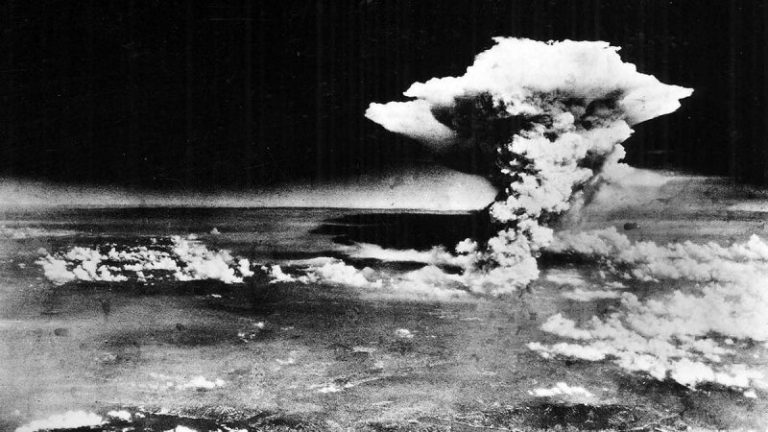Wednesday marks the 80th anniversary of when the U.S. employed the first ever nuclear bomb over the Japanese city of Hiroshima, followed by the bombing of Nagasaki three days later on Aug. 9. But despite nearly a century of lessons learned, nuclear warfare still remains a significant threat.
‘This is the first time that the United States is facing down two nuclear peer adversaries – Russia and China,’ Rebeccah Heinrichs, nuclear expert and senior fellow at the Hudson Institute, told Fox News Digital.
Heinrichs explained that not only are Moscow and Beijing continuing to develop new nuclear capabilities and delivery systems, but they are increasingly collaborating with one another in direct opposition to the West, and more pointedly, the U.S.
‘It’s a much more complex nuclear threat environment than what the United States even had to contend with during the Cold War, where we just had one nuclear peer adversary in the Soviet Union,’ she said. ‘In that regard, it’s a serious problem, especially when both China and Russia are investing in nuclear capabilities and at the same time have revanchist goals.’
Despite the known immense devastation that would accompany an atomic war between two nuclear nations, concern has been growing that the threat of nuclear war is on the rise.
The bombings of Hiroshima and Nagasaki – which collectively killed some 200,000 people, not including the dozens of thousands who later died from radiation poisoning and cancer – have been attributed with bringing an end to World War II.
But the bombs did more than end the deadliest war in human history – they forever changed military doctrine, sparked a nuclear arms race and cemented the concept of deterrence through the theory of mutually assured destruction.
Earlier this year the Bulletin of Atomic Scientists moved forward the ‘Doomsday Clock’ by one second – pushing it closer to ‘midnight,’ or atomic meltdown, than ever before.
In January, the board of scientists and security officials in charge of the 78-year-old clock, which is used to measure the threat level of nuclear warfare, said that moving the clock to 89 seconds to midnight ‘signals that the world is on a course of unprecedented risk, and that continuing on the current path is a form of madness.’
Despite the escalated nuclear threats coming out of North Korea, and international concern over the Iranian nuclear program, the threat level largely came down to the three biggest players in the nuclear arena: Russia, the U.S. and China.
The increased threat level was attributed to Russia’s refusal to comply with international nuclear treaties amid its continuously escalating war in Ukraine and its hostile opposition to NATO nations, as well as China’s insistence on expanding its nuclear arsenal.
But the Bulletin, which was founded by scientists on the Manhattan Project in 1945 to inform the public of the dangers of atomic warfare, also said the U.S. has a role in the increased nuclear threat level.
‘The U.S. has abdicated its role as a voice of caution. It seems inclined to expand its nuclear arsenal and adopt a posture that reinforces the belief that ‘limited’ use of nuclear weapons can be managed,’ the Bulletin said. ‘Such misplaced confidence could have us stumble into a nuclear war.’
But Heinrichs countered the ‘alarmist’ message and argued that deterrence remains a very real protectant against nuclear warfare, even as Russia increasingly threatens Western nations with atomic use.
‘I do think that it’s a serious threat. I don’t think it’s inevitable that we’re sort of staring down nuclear Armageddon,’ she said.
Heinrichs argued the chief threat is not the number of nuclear warheads a nation possesses, but in how they threaten to employ their capabilities.
‘I think that whenever there is a threat of nuclear use, it’s because adversaries, authoritarian countries, in particular Russia, is threatening to use nuclear weapons to invade another country. And that’s where the greatest risk of deterrence failure is,’ she said. ‘It’s not because of the sheer number of nuclear weapons.’
Heinrichs said Russia is lowering the nuclear threshold by routinely threatening to employ nuclear weapons in a move to coerce Western nations to capitulate to their demands, as in the case of capturing territory in Ukraine and attempting to deny it NATO access.
Instead, she argued that the U.S. and its allies need to improve their deterrence by not only staying on top of their capabilities but expanding their nuclear reach in regions like the Indo-Pacific.
‘The answer is not to be so afraid of it or alarmed that you capitulate, because you’re only going to beget more nuclear coercion if you do that,’ she said. ‘The answer is to prudently, carefully communicate to the Russians they are not going to succeed through nuclear coercion, that the United States also has credible response options.
‘We also have nuclear weapons, and we have credible and proportional responses, and so they shouldn’t go down that path,’ Heinrichs said. ‘That’s how we maintain the nuclear peace. That’s how we deter conflict. And that’s how we ensure that a nuclear weapon is not used.’



